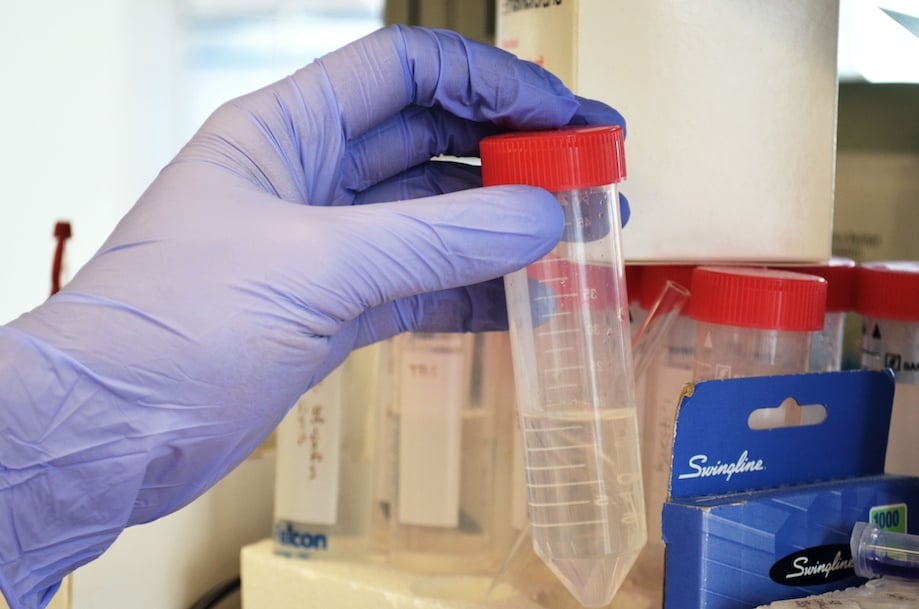I remember when I first started grad school.
I was pumped about my project, examining the signaling and physiological role of a novel dopamine receptor complex. We had experienced research associates, state-of-the-art equipment, and bold hypotheses. I was ready to take the first step on the road of biomedical discoveries. Then I faced my first obstacle:
Which antibody should I use for my Western Blot?

It’s one of those things that nobody really teaches you. My lab had well established protocols for many antibody-based applications, ranging from Western Blot, to immunofluorescence, to FRET, but we never had an established “protocol” for finding the most suitable antibodies. Yet, antibodies can often be the main determining factor for successful and reproducible experiments.
In this article, I’d like to outline a 10-step “protocol” as a guide for every antibody search. (Hint: it’s more than just Googling.)
1. Identify target antigen and alternative gene names
Use GeneNames to find out the approved nomenclature for the protein in study, as different proteins may share a common name. Then, use GeneCards to identify aliases to expand the possible search queries, as antibody suppliers may name the same protein using different aliases.
2. Define antigen restrictions
Decide the intended specificity for isoforms, functional domains, processed forms, domains with different subcellular localization (extracellular vs. intracellular etc.) and post-translational modifications of the protein in study.
3. Obtain canonical protein sequence
Use Uniprot to find out the amino acid sequence for the protein (and its isoforms) in study.
4. Determine potential cross-reactivity with other species or proteins
Analyze the sequence using NCBI’s BLAST tool to define whether there are distinct regions of the chosen protein containing linear epitopes that are unique to the individual antigen, as well as regions of the target antigen where antibodies are likely to cross-react with other proteins with which they share sequence identity.
5. Define the ideal epitope(s)
Depending on the study interest, the ideal epitopes could be unique regions in the target antigen conferring specificity or those conferring cross reactivity.
6. Decide applications
Antibodies are often more suitable for specific applications depending on whether they bind to linear (Western Blot and paraffin-embedded immunohistochemistry) or native (immunoprecipitation, frozen-section immunohistochemitry, flow cytometry, and ELISA) epitopes.
In addition, an antibody that recognizes a formalin-resistant epitope for immunohistochemistry may also work in another technique using formalin fixation, such as ChIP.
7. Decide primary antibody isotype and host
When probing with multiple primary antibodies in a single experiment, it may be advantageous to choose antibodies of distinct hosts or isotypes, allowing for detection of multiple targets using isotype- or host-specific secondary reagents conjugated with different fluorescent labels.
Examples include co-localization or protein-interaction studies.
8. Decide clonality of antibody
The clonality of the antibody should be determined based on the intended applications.
Polyclonal antibodies are produced by immunizing host animals with the antigen, and each batch contains a mixture of antibodies targeting various epitopes on the same antigen. As a result, polyclonals can enhance detection signals by enabling more antibodies to bind the same antigen to form large precipitating lattices. However, this lack of specificity limits the use of polyclonals to mainly Western Blot, which allows off target bindings to be distinguished as bands at various molecular weights.
On the other hand, since monoclonal antibodies are identical clones produced from a single hybridoma (uniquely identified by clone ID), they target a single epitope and a single isotype, thereby conferring higher specificity than polyclonals. Monoclonals are ideal for applications using native tissues, such as IP and flow cytometry.
9. Identify antibodies from the literature
Once the desired antigen and antibody characteristics have been defined, conduct extensive literature searches to identify antibodies that have been published in similar experimental contexts of interest (ie. same application, tissue, or cell line).
There are many resources that can help save time on the literature search, including BenchSci.
Review publications and carefully scrutinize antibody usage data. Watch out for antibodies that show discrepancies across the literature, such as an antibody detecting proteins of different molecular weights or showing different protein expression patterns in the same tissue type. If validation data were not presented in the paper, contact the authors to request this information.
10. Prioritize and validate antibody candidates
Generate a list of commercially available antibodies following the literature search. Prioritize the antibodies based on product data sheet to match the antigen and antibody characteristics defined in Step 1-8.
Keep in mind to always perform validation experiments (using knock-out, IP-MS, or CRISPR) prior to applying the antibody in your study.
What are the steps you usually took when searching antibodies? Let me know in the comment section below if I missed anything and I’ll update the “protocol” accordingly.
And to help you specifically with Step 9, why not register a free account on BenchSci to save time looking back and forth between vendor sites and papers?
{{cta(‘f01380a5-3b6c-47bb-855b-5acf4d6130d4’)}}